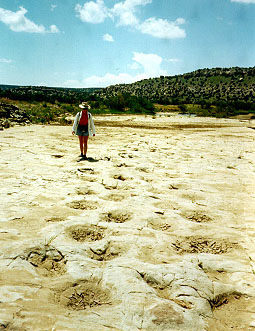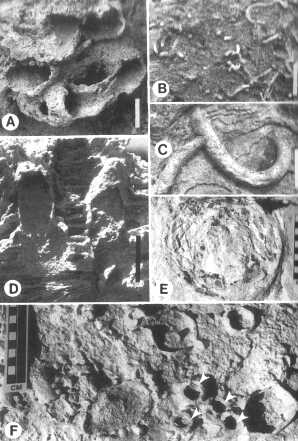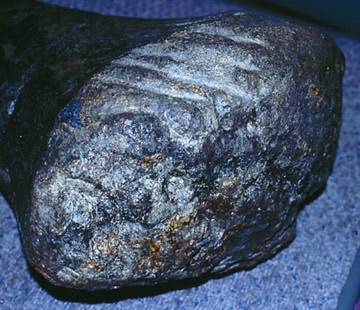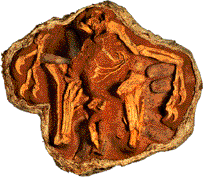
Dinosaur Track

Sauropod Trackway

Burrows

Borings
A trace fossil is a fossil that an organism has formed within or above a sedimentary substrate. The formation is caused by the specimen's actions or behavior within the environment rather than the preservation of the organism's hard parts such as skeletal remains or shell. Such occurrences must take place while the organism is alive. The fossil may be a remnant of some organism's footprints, trackways, trails, burrows, borings, predation markings, eggs/nests, and coprolites.
Footprints, or tracks, are impressions left in the sedimentary substrate by an organism with legs. Trackways are several successions of footprints which are made by a single organism. Trails are impressions left on a sedimentary substrate by an animal who has no legs or has legs and drags its body or body part along the substrate. Burrows are formed by an organism occupying a space within unconsolidated material. Borings are formed by an organism occupying a space within consolidated material. Predation markings or bite marks are direct evidence of predation where the predators tooth marks are found on the hard part(s) of the prey. Eggs are produced through procreation and it is the egg shell that makes up the trace fossil. Nests are structures formed by a species either within the substrate or on top with different materials such as mud, sticks, and leaves. Coprolites are fossilized fecal matter of a species.

Dinosaur Track |

Sauropod Trackway |

Burrows |

Borings |

Dinosaur Bite Marks |

Dinosaur Eggs |

Raptor's Nest |

Dinosaur Coprolite |